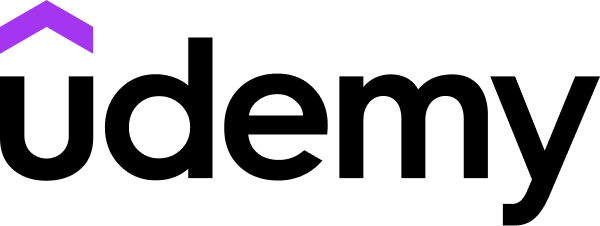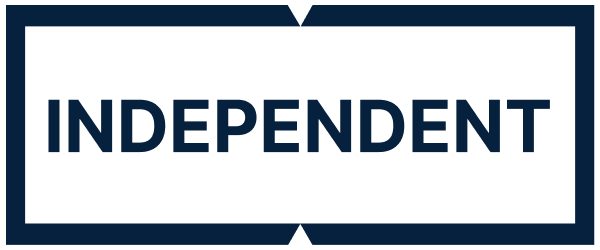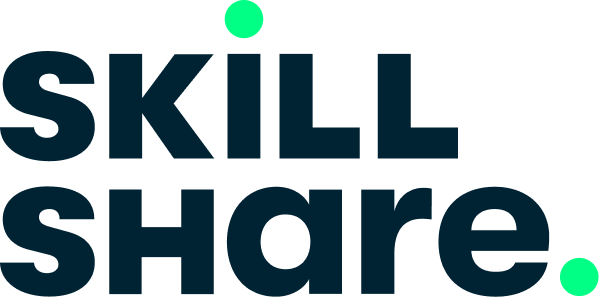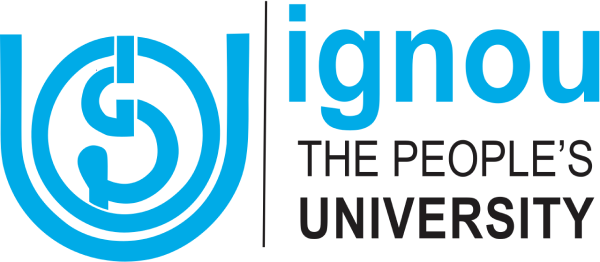Courses improving the Project Management skill
600+ courses
Dialogflow CX: Contextual Intents
In this lab you will learn how to use some advanced Dialogflow CX features, like how to let a user ask your virtual agent to repeat what it said; let the user ask common questions from your FAQ in the middle of another conversation; ask context-sensitive questions, and add conversational branching and looping based on current values in the session parameters.

Slack: An Overview
In this video, we will provide an overview of Slack, a popular communication platform used by businesses to improve collaboration among team members. We will explore the different versions of Slack available, including free standard, plus, and enterprise grid, as well as their features and pricing options. Additionally, we will discuss how Slack can help colleagues communicate more effectively through sharing files, links, and searching older conversations. By the end of this video, viewers should have a good understanding of how Slack works and how it can benefit their organization.

Waterfall Model | What is SDLC | Software Development Life Cycle | Great Learning
The video begins by explaining that the software development life cycle (SDLC) is a process for designing, developing, and testing high-quality software. The waterfall model, introduced first, is the simplest and easiest to understand life cycle model. It's a linear sequential life cycle model where each phase is completed before moving on to the next one. The video covers why SDLC is required, including producing software with the highest quality and lowest cost in the shortest time possible. It then delves into the different phases of SDLC, such as requirement gathering and analysis, design, implementation, testing, and maintenance. The video also discusses the importance of sharing knowledge to make sure that the software developed meets the needs of its users.

Careers in the Game Industry
Turn your love of video games into a career. Learn about concepts and skills you'll need to master to build and finance your own game or find a job in the game industry.

Create a Flyer Using Microsoft Word
After successfully completing this project, you will have created a visually appealing flyer using Microsoft Word. While building a flyer, you will use various features in Word. You will use the Insert feature to insert a picture in a document. Other features you will use include applying styles to text and pictures. You will insert a numbered list, convert it to a bulleted list, and then modify the bullets. You will also discover how to apply a theme to a document.

Design Remote Meeting Boards in Miro
By the end of this project, you will be able to design a remote meeting board to enhance the quality of time spent in remote meetings and efficiently move through an agenda. To do this, you will gain hands-on experience designing a remote meeting and leveraging collaboration and attention tools in the Miro online visual collaboration platform for teamwork. Note: This course works best for learners who are based in the North America region. We’re currently working on providing the same experience in other regions.

Unity 3D Video Game Kit Introduction
Design and Build a Video Game Level without Coding. Great way to learn the Unity Engine. (3.5 hours) What you'll learn: Unity 3D Game Kit - a powerful tool that requires no programmingHow to build an action adventure level with triggers that open doors, moving platforms, enemies, hazards, and moreHow to use the Unity engine, including understanding the relationship between the hierarchy, game assets and inspectorHow to build a level from scratch with a handful of useful level design strategies Want to make a game but aren’t yet ready to learn programming? Unity 3D Game Kit is the answer. Both the Unity Engine and the Game Kit plug-in are completely free to download and start using to build your game development skills.This course is an introduction course. It is intended to be just a couple of hours in length and get you up and running as efficiently as possible.This course is taught using Unity 2019.1 and is backwards compatible to Unity 2018.3 and later.This Unity 3D Game Kit from comes cram packed with beautiful graphics, easy-to-use design tools and plenty of creative freedom to flex your level designer muscles. Its a perfect place to learn Unity without needing to wrestle with learning a programming language. Its perfect for someone interested in being a game designer or level designer without needing to worry about building an entire game in order to create fun designs.The output from this course will be your very own fully-functioning death star... oh wait... fully-functioning action adventure level (even cooler). You'll learn how to implement the following (without needing to do any coding, did we mention that?)...Create beautiful and interesting environments using the huge pack of assets that come with the Game KitAdd platforms, moving platforms, doors, keys / locks and other building blocks necessary for making an interesting levelAdd and tuning enemies for the player to battleAdd hazards and traps that can harm the playerAnd, of course, lots more This course includes a beginner-friendly introduction to installing and learning the Unity user interface for those folks who are not familiar with the engine. And mixed in will be a sprinkling of game design and level design best practices. The end result will be your very own action adventure level, complete with challenges, obstacles and enemies.This course is brought to you by the GameDev-tv team, creators of the world's most popular online Unity course. By purchasing this course you will have full access to the GameDev-tv community. Get plugged into our communities of amazing developers on Facebook (nearly 20k), in our own TA-curated Community (17k views/day), and our student chat group (10k live at any one time).

Set up warehouse tasks in Microsoft Dynamics 365 Business Central
Module 1: Other than the more advanced warehouse management systems, you can also set up basic warehousing in Microsoft Dynamics 365 Business Central. This module explains how to set up locations with bins and enable inventory put-aways and picks.In this module, you will:Discover the difference between basic warehousing and warehouse management systems.Set up bins for a location.Configure fixed bins for an item.Set up inventory put-aways and picks.Set up warehouse receipts to receive multiple orders instantly.Set up warehouse shipments to ship multiple orders instantly.Module 2: Do you want to learn how to receive and put away items in the warehouse? This module shows how you can post the receipt and put away simultaneously with the inventory put-away document or how you can process them separately with warehouse documents.In this module, you will:Receive and put away an item from the purchase order.Learn the difference between an inventory put-away and warehouse put-away.Use the inventory put-away document to receive and put away an item.Put away an item in multiple bins.Create a warehouse receipt for multiple orders simultaneously.Put away items with the warehouse put-away document.Module 3: Do you want to learn how to manage internal warehouse processes in locations where bins are mandatory? This module demonstrates how to move items between bins and how to adjust items. You will also learn how to use bins in production and assembly orders.In this module, you will:Move items from one bin to another.Adjust items in bins.Count items in bins.Reclassify items in bins.Consume assembly components in bins.Post assembly output of bins.Module 4: Do you want to know how to pick items from the warehouse and ship them to customers, vendors, or other locations? This module shows how you can post the pick and shipment at once with the inventory pick document or how you can process them separately with warehouse documents.In this module, you will:Pick and ship from the order line.Discover the difference between an inventory pick and warehouse pick.Use the inventory pick document to pick and ship an item.Pick an item from multiple bins.Create a warehouse shipment for multiple orders at once.Pick items with the warehouse pick document.

Foundations in Resilience, Security and Emerging Technology
Discover the factors that affect society’s ability to be resilient There are various constraints, influences, and challenging conditions that affect society’s ability to build resilience. On this course, you will be introduced to the primary challenges of creating a resilient society. You will examine the role of governance in building resilience and the impact of emerging technologies on future resilience. You will also have the opportunity to look at the risks that stakeholders might identify in relation to resilience challenges. This course is for anyone interested in exploring the key challenges of building a resilient society. Please note that the individuals detailed in the ‘Who will you learn with?’ section below, are current staff members and may be subject to change.
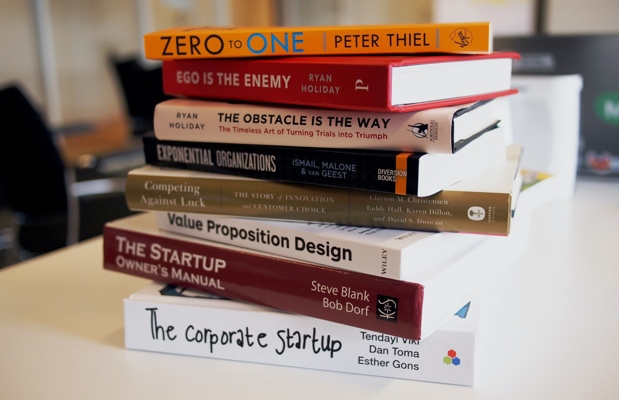
STEM Is Everywhere!
This course is meant to connect Science, Technology, Engineering and Mathematics (STEM) classes with “real life” and help teachers integrate real-world problems into their STEM lessons and practices. The lack of connection between real life and STEM classes might cause students to rule out STEM careers, because they feel detached from STEM and might deem it too “academic” or “research-oriented”. Teachers often encounter this issue when they aim to motivate their students or direct them towards STEM careers. Therefore, the ‘STEM Is Everywhere!’ course offers guidance and practical examples for you to bring real-world problems to your STEM teaching in an entertaining way. The course also aims to connect you with other STEM teachers so that you can share experiences and best practices.

NolaCon 2019 C 08 Empathy for the Developer Lessons Learned Building An Application Security Module
Elanda Smith's presentation at Nolicon 2019 focuses on building empathy amongst developers. She begins by sharing her personal experiences and how she appreciates the opportunity to speak with the audience about this topic. Elanda then explains why developers are still facing similar issues despite being aware of them for two decades, including cross-site scripting, SQLI, default passwords, and the need for resilience in the development community. She provides examples from her daily life and hearing from developers she works with, highlighting the importance of empathy in the field. The presentation also covers why these issues persist and what can be done to address them. Elanda emphasizes the need for a day-to-day effort towards building empathy and resilience in the development community.
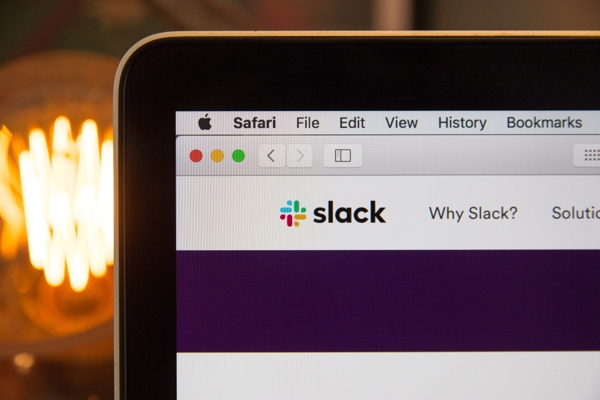
Get up and running quickly with Microsoft Vaccination Management
Module 1: Microsoft Vaccination Management is a solution for vaccine site administrators to connect eligible people with vaccination facilities through online registration and appointment scheduling.In this module, you will:Learn how Microsoft Vaccination Management addresses global vaccination needs.Explore Microsoft Vaccination Management architecture, capabilities, and personas.Examine HL7 integration with Immunization Information System (IIS).Module 2: Microsoft Cloud Solution Center provides a central place to deploy and configure solutions. In this module, you'll learn about Microsoft Cloud Solution Center and licensing scenarios for Microsoft Vaccination Management.In this module, you will:Learn about the Microsoft Cloud Solution Center.Learn about licensing scenarios for Microsoft Vaccination Management.Module 3: Learn how to set up an environment for Microsoft Vaccination Management.In this module, you will:Create a trial tenant.Access and deploy your environment.Module 4: Learn how to update portal bindings and Bing Maps settings, and learn how to enable, configure, and integrate Microsoft Vaccination Management.In this module, you will:Explore and enable Microsoft Vaccination Management workflows.Learn how to update Microsoft Vaccination Management portal bindings and Bing Maps settings.Learn how to enable, configure, and customize Microsoft Power Automate flows in Microsoft Vaccination Management.Learn how to integrate Power Automate email flows in Microsoft Vaccination Management with a bulk email service connector.Module 5: This exercise covers the Microsoft Vaccination Management user experience and scenarios that are encountered by program administrators.In this module, you will:Load and connect data with Power Query.Set up site management reference data.Set up master data.Module 6: This lab covers Microsoft Vaccination Management user experiences and scenarios.In this module, you will:Learn about the vaccination management registration and booking capabilities.Check vaccination eligibility and registration.Book an appointment.Configure the portal for new questions and scenarios.Module 7: Workers at vaccination sites can use the Frontline worker app to distribute and administer vaccinations safely and effectively.In this module, you will:Check in residents manually or by scanning a QR code.Administer and record vaccinations.Create new columns in Microsoft Dataverse tables.Add new fields to the Frontline worker app.Module 8: Learn how to use the Microsoft Vaccination Management Dashboard.In this module, you will:Configure the vaccination dashboard.Share the vaccination dashboard.Embed a dashboard into Microsoft Power Apps.

Autodesk Revit 2021 Complete Beginners Guide
This course is aimed at those with absolutely no prior experience in Autodesk Revit. It is also helpful to those who may have tried to learn the software in the past but forgotten how to use it. The course is designed to get you up & running with Revit quickly by teaching you the things you need to know without long-winded explanations of techniques and commands that are no longer used. It's recorded using Revit 2021 but can be used to learn any version of Revit from 2018. You will begin the course with a description of a project and learn how to create your own building model which will be added to and refined as your knowledge grows and new commands are introduced. By the end of this course, you will have produced a fully complete 3D building model to a standard that would be acceptable in any workplace. You will learn BIM techniques hat will allow automatic production of schedules and documentation.

Project Management for Business Professionals
This course provides an introduction to the concepts, techniques, and principles of project management. Primary emphasis will be on learning the project management process outlined in the Project Management Institute's PMBOK Guide (Project Management Body of Knowledge Guide). Agile, extreme, and other variations of project management will be discussed and their key features related to the PMBOK Guide. Upon completion of the course students will be able to plan, schedule, budget, estimate, control, and monitor projects. In addition, they will become familiar with resource allocation, resource loading and the creation and use of GANTT and PERT charts. Purchase of the PMBOK Guide for use as a text is optional. For those wanting to use this course to support new or continuing certification by the Project Management Institute (PMI), purchasing the text is recommended. A certificate and supporting documentation is available for a fee upon completion of this course. This certificate can be used to meet professional development requirements for the PMI’s Project Management Professional (PMP) certification.

From AI first, to user first - Klara Vatn - NDC Oslo 2021
Clara Vachn shares her insights on SpaceMaker's journey from a small startup to a scale-up, emphasizing their focus on user experience. She discusses the company's evolution, including its expansion into new markets and Autodesk's acquisition of SpaceMaker. The presentation provides valuable insights into the challenges and opportunities faced by startups in the urban planning and development sector.

Introduction to Peace and Conflict Management BGP-001
The Programme, is focused on the understanding of peace and conflict resolution, to deal with conflict in the society particularly in Gandhian perspective. The giant strides man has made in science and technology have failed to engender peace of mind in the individuals, harmony in society, and peace among nations; nor have they helped in liquidating poverty, ignorance, and exploitation. Global warming and climate change, a direct consequence of destructive use of nature, threatens the very survival of the biosphere. Man has become a victim of his own creation. Many thinkers and activists, in the world today, have begun to turn to the life, thoughts and methods of Mahatma Gandhi to look for solutions for above mention. Activists and thinkers of younger generation in the world are looking to the alternative path that Gandhi showed in the hope that his message and mission are of crucial significance to the survival of mankind. The programme you are going to pursue develops these objectives. We are sure you will be benefitted and be better prepared for contribution towards peace in the society at large.Course Credit-4

Ignite Your Everyday Creativity
Class Central Tips Creativity is an essential skill for the 21st Century that is innate in all people and can be nurtured. We constantly need new and better ideas for almost every aspect of our professional and personal lives. The goal of this course is to help you recognize, develop and act upon the creativity that you already possess. We will accomplish this using three methods: b aware, b inspired, and b creative. Upon completion of this course participants will: Recognize the inherent creativity in yourself and others. Identify characteristics of a creative person that relate to yourself. Develop creative problem solving skills using the basic elements of the creative process. Examine qualities of a creative environment in real world settings. Evaluate an idea using the creative product criteria.

People, Technology and the Future of Mobility
Welcome to the People, Technology, and the Future of Mobility course! This course provides a lay-person’s introduction to some of the major technological innovations currently underway in the mobility space and asks learners to apply a variety of social science concepts to understand the likely social impacts of these technologies. The course is appropriate for learners from all backgrounds and does not require prior training in engineering or social science. The content presented in this course draws on a number of interviews and lectures and was created through a partnership with Siemens. The course also includes an interactive 360 video experience that allows learners to explore the key components of an autonomous vehicle, go on a ride-along in an autonomous car, and learn about new sensing technology we could see in smart cities of today and tomorrow. This course challenges learners to envision mobility of the future that is safer, cleaner, and more equitable. We will examine recent technological advances, as well as the socio-economic and policy implications, of two major evolving mobility-related technology spaces: electrification and automation.

Management: Top Tips
Get two-minute tips on the most important management topics: assertiveness, negotiation, time management, project management, and presentation skills.

Our Energy Future
Class Central Tips This course is designed to introduce students to the issues of energy in the 21st century – including food and fuels – which are inseparably linked – and will discuss energy production and utilization from the biology, engineering, economics, climate science, and social science perspectives. This course will cover the current production and utilization of energy, as well as the consequences of this use, examining finite fossil energy reserves, how food and energy are linked, impacts on the environment and climate, and the social and economic impacts of our present energy and food production and use. After the introductory lectures, we will examine the emerging field of sustainable energy, fuel and food production, emphasizing the importance of developing energy efficient and sustainable methods of production, and how these new technologies can contribute to replacing the diminishing supplies of fossil fuels, and reduce the consequences of carbon dioxide release into the environment. This course will also cover the importance of creating a sustainable energy future for all societies including those of the developing world. Lectures will be prepared and delivered by leading UC San Diego and Scripps Institution of Oceanography faculty and industry professionals across these areas of expertise.

Executing Breakthrough Innovations with the Three Box Solution
When companies launch Box 3 innovation initiatives, they typically allot most of their time and energy to the thrilling hunt for the breakthrough idea. That much-ballyhooed burst of inspiration is merely a starting point. The real innovation challenge lies beyond the idea. It lies in a long, hard journey—from imagination to impact. In this course, part of the Leading Innovation Professional Certificate program, Vijay Govindarajan (VG) reveals how to execute a Box 3 innovation initiative. The crux of the challenge is that business organizations are not designed for innovation; they are designed for ongoing operations. And there are deep and fundamental conflicts between the two. This course is based on the frameworks and ideas from The Three Box Solution: A Strategy for Leading Innovation book. Using three modules, VG shows you how to: Build the right team for your innovation initiative: Determine who will be on the team, how it will be structured, and how it can partner with ongoing operations. Anticipate and prevent conflicts. Run a disciplined experiment: Test assumptions, translate results into new knowledge, and measure progress. The content of this course is relevant for a large corporation, a mid-size business, a startup or a nonprofit organization. Because innovation is a team sport, the course is useful for individuals who intend to advance careers in R&D, Engineering, Manufacturing, Marketing, Sales, Service, Human Resources, Accounting, and Finance.

Simulation of Drum-Buffer-Rope Control Using R Simmer
Welcome to "Simulation of Drum-Buffer-Rope Production Control Using R-Simmer". This is a project-based course which should take about 2 hours to finish. Before diving into the project, please take a look at the course objectives and structure. By the end of this project, you will gain introductiory knowledge of Drum-Buffer-Rope Production Control, Discrete Event Simulation, be able to use R Studio and Simmer library, create statistical variables required for simulation, define process trajectory, define and assign resources, define arrivals (eg. incoming customers / work units), run simulation in R, store results in data frames, plot charts and interpret the results.

Creating a Project Schedule in Smart Sheet
The video begins with the host introducing themselves and explaining that they will be covering the steps to create a project schedule prior to entering it into a tool such as Smart Sheet. They explain that the first step is to create a work breakdown structure, which is a top-level overview of the project. The host then provides an example of what a work breakdown structure looks like and mentions that there are resources available for creating a more detailed structure. They also mention that they have a master's degree in project management and are PNP certified. The video does not provide specific instructions on how to create a project schedule using Smart Sheet, but rather provides an overview of the steps involved.

Making Money as a Freelancer
The second course in the Building Your Freelancing Career specialization is aimed at freelancers looking to integrate financial analysis and strategy into their business. Learners will discover and apply accounting best practices through creating a budget and financial plan and using it to set financial goals with rates and prices backed up by their own research. CalArtians who do not see a "Sponsored by CalArts" notice when enrolling are encouraged to access this course and the specialization by joining through the Coursera for CalArts program linked in the course/specialization FAQ.

Carlo & Micah - Project Necromancy: How to Revive a Dead Rust Project — RustFest Global 2020
Carlo and Mika share their experiences working on a 2D shooter game made with the Amethyst game engine, a project that started as a dead rust project. They discuss their journey in the world of rust programming, from diving straight into embedded rust to working on a remote controlled rover with sensors and an infrared camera. Carlo also shares his experiences working on a game called Space Shooter RS, which is a space shooter game made with the Amethyst game engine, with heavy inspiration from the binding of Isaac. Mika provides insights into front-end web development and how he works on the Firefox web browser's UI. They both offer tips and tricks on how to revive a dead rust project by dressing it up with an Embedded Code System (ECS) and making it look alive. The video covers topics such as electronics tinkering, PCB design, 3D printing, and software development.

Revit 2020: Interior Design Project Management Techniques
Explore how to use the powerful capabilities of Revit for interior designers, as part of a building information modeling (BIM) workflow. Autodesk Revit is most often thought of in connection with architects and engineers, but in this course, instructor Chanté Bright explores using the power of Revit for interior design project management. Chanté covers using Revit for schedule tracking, material selection, life-cycle costing, and more. Revit offers many little-known features that make it a great choice for an interior designerâs project management toolkit.

Monitoring and Logging for Cloud Functions
This is a self-paced lab that takes place in the Google Cloud console. In this hands-on lab we take a look through some of the information provided by the Cloud Monitoring tools, and teach some of the concepts you will need to know to take advantage of Cloud Monitoring effectively.

School Management and Leadership
This course is meant for capacity building of school headteachers/principals and the prospective headteachers of schools to provide them with the necessary knowledge, skills and competencies for effectively playing the role of the ‘Headmaster’ or ‘Principal’ in schools. The online course includes Twelve Modules with two/three units under each module. A total of twenty-five units. Pedagogy: Learning material will be in the form of e-text, PPTs, Audio-Video Lectures, and tutorials. Discussion Forum, 10 MCQs as Self-Assessment Questions per Module.

LCFA Exam Preparation
This course is ideal for those getting started in an IT career as an administrator/engineer who want to become a Linux Foundation Certified IT Associate (LFCA). The LCFA Exam Preparation course is designed to introduce learners to the sponsor organization behind the LFCA certification exam and the details of taking the LFCA exam. This class helps learners prepare for the LFCA exam through a series of self-paced learning, readings, discussions and practice exams.

Grads Are Your Future: It's time to Invest! • Michelle Gleeson • YOW! 2018
The presentation focuses on the reasons why CQ decided to create a graduate program, which was prompted by the lack of professional development opportunities for seniors and the high time-to-hire for senior developers. The program aimed to provide more junior developers to lead and fill immediate business needs. The speaker discusses the challenges faced during the hiring process, including the difficulty in finding and recruiting suitable candidates, and how the graduate program has helped address these issues. The presentation covers topics such as the importance of professional development, the benefits of having a graduate program, and the challenges of hiring senior developers in competitive markets.




